This article was medically reviewed by Cristian Macau, DDS. Dr. Macau is an oral surgeon, periodontist, and aesthetician at Favero Dental Clinic in London. He received his DDS from Carol Davila University of Medicine in 2015.
This article has been viewed 340,091 times.
If you are a fan of electronic toothbrushes, you may use a Philips Sonicare to enjoy deep cleaning of your teeth and mouth. But sometimes black or even pink gunk, which may be mold or bacteria, can build up on the unit.[1] By disinfecting your Philips Sonicare and maintaining its cleanliness on a daily basis can get rid of black gunk and prevent it from developing.[2]
Steps
Removing the Gunk
-
1Separate the toothbrush parts. Take apart your Phillips Sonicare by removing the brush head from the handle. This can make it easier to identify sources of gunk and clean them thoroughly.
- Unplug the charger before you separate the brush from the charger. Even if the wires are not connected to the toothbrush, it is best to be safe.
- Align the brush head with the front of the handle and pull up to remove it.
- Unplug the charger before you inspect your toothbrush.
- Place each part on a towel or other cloth to prevent bacteria from spreading on other surfaces.
-
2Identify parts with gunk. Generally, most mold or bacteria will develop on areas of your toothbrush not exposed to air, including brush heads stored in plastic.[3] Figuring out which parts have gunk can help you more effectively remove it and keep it from returning.
- Inspect the brush head and handle individually and thoroughly. You are most likely to find gunk on the (moist) surfaces that the brush head and charger connect. The handle is usually full of bacteria from holding the toothbrush, but also from the toothpaste that gathers during brushing.
Advertisement -
3Soak the brush head. Make either a peroxide, vinegar, or bleach solution and submerge your brush head in it. This can not only remove and kill mold, but also any lingering bacteria that could infect your oral cavity.
- Wipe the base of the head before soaking it to help the solution more effectively remove other gunk.[4]
- Mix one part bleach to ten parts water and soak the brush head for an hour.[5]
- Mix ½ cup/ 120ml of water and 2 tablespoons/ 30ml white vinegar in a cup. If desired, add 2 teaspoons/ 10mg baking soda if you like as well. Soak the brush head for 30 minutes.
- Place the brush head in a cup with 3.0% hydrogen peroxide for 20 minutes.[6]
-
4Rinse and dry brush head. Once you’ve soaked your brush head in the solution you chose for the allotted time, thoroughly rinse and dry it. Pay attention to the time to avoid fraying the bristles. This can ensure that you remove all of the solution and any residue and help keep more black gunk from forming.[7]
-
5Clean the handle. After you’ve removed the gunk and properly stored your brush head, you can move on to cleaning the handle. In most cases, you can simply clean off black gunk with a mild cleanser or bleach solution with a soft cloth.
- Avoid submerging the handle in water or a disinfectant solution, which can make it inoperable because it is an electronic device.[10]
- You can use a mild soap or a mixture of one part bleach to ten parts water to clean the gunk off of your toothbrush handle.[11]
- Dip a cotton swab or pad in the solution or soapy water and clean the area where the head attaches. Then clean the rest of the unit.[12] You can also use disinfectant wipes that have been presoaked in alcohol. These wipes can easily clean the entire handle and the solution will evaporate quickly.
- If black gunk is coming out of the handle, you may want to call Phillips Customer Service and request a new handle, as it is difficult to deconstruct the handle unit in order to effectively clean it. You can reach Phillips at 1(888) 744-5477.
- Allow the unit to dry thoroughly before reattaching it to the brush head.
-
6Avoid washing in a dishwasher. Avoid removing gunk or cleaning any part of your Sonicare by placing it in a dishwasher. This can damage the unit and make it inoperable.
Keeping it Clean
-
1Choose the optimal toothpaste. Select a toothpaste that effectively kills oral bacteria. This may help keep your brush from developing gunk and other bacteria that could harm your health.[13]
- Most toothpastes will help keep bacteria on your toothbrush at bay.[14] Using an alkaline toothpaste will also help to reduce bacteria and prevent the new formation of colonies for a while.
- Try a toothpaste with tricolsan/ copolymer, which may be more effective at keeping bacteria and gunk from forming.[15]
-
2Rinse the head thoroughly. After each use of your Sonicare, rinse the brush head thoroughly. Consider detaching it from the handle to help minimize the risk of developing gunk.
- Hold the brush head under the water for at least 20 seconds.
- Allow the head to air-dry completely.
- Wipe off the handle if necessary.
-
3Disassemble the head and handle. When you’re not using your toothbrush, store the head and handle separately. This allows each part to dry thoroughly, which can help prevent gunk from developing on or in your Sonicare.
- Wipe any surfaces that appear moist, especially around the head and handle seal.
-
4Store the Sonicare properly. Store your Sonicare in an upright position, which can keep gunk from getting caught in the unit. Keep the unit in a cool and dry place away from direct sunlight, the toilet seat, or any other place where the toothbrush might fall off and break.
- You can store the unit on the charger if you like, though you shouldn’t need to charge it more than once a week.
Expert Q&A
Did you know you can get expert answers for this article?
Unlock expert answers by supporting wikiHow
-
QuestionMy charger has a build up of gunk where the toothbrush fits into the powerbase. How do I clean it?
 Cristian Macau, DDSDr. Macau is an oral surgeon, periodontist, and aesthetician at Favero Dental Clinic in London. He received his DDS from Carol Davila University of Medicine in 2015.
Cristian Macau, DDSDr. Macau is an oral surgeon, periodontist, and aesthetician at Favero Dental Clinic in London. He received his DDS from Carol Davila University of Medicine in 2015.
Doctor of Dental Surgery
-
QuestionI just found all the black gunk you are referring to. I did not know that I was supposed to open and clean it. Can this black gunk make me sick?
 Cristian Macau, DDSDr. Macau is an oral surgeon, periodontist, and aesthetician at Favero Dental Clinic in London. He received his DDS from Carol Davila University of Medicine in 2015.
Cristian Macau, DDSDr. Macau is an oral surgeon, periodontist, and aesthetician at Favero Dental Clinic in London. He received his DDS from Carol Davila University of Medicine in 2015.
Doctor of Dental Surgery
References
- ↑ http://www.huffingtonpost.com/2014/04/21/toothbrush-germs-_n_5127448.html
- ↑ http://www.p4c.philips.com/cgi-bin/cpindex.pl?ctn=HX6711/02&dct=QAD&faqview=1&refdisplay=E10_RTB_CLEANING_001&refnr=0082682&scy=US&slg=AEN
- ↑ http://www.p4c.philips.com/cgi-bin/cpindex.pl?ctn=HX6711/02&dct=QAD&faqview=1&refdisplay=E10_RTB_CLEANING_001&refnr=0082682&scy=US&slg=AEN
- ↑ http://www.howtocleananything.com/personal-hygiene/how-to-clean-an-electric-toothbrush/
- ↑ http://www.howtocleananything.com/personal-hygiene/how-to-clean-an-electric-toothbrush/
- ↑ http://www.ncbi.nlm.nih.gov/pmc/articles/PMC3276857/
- ↑ http://www.ncbi.nlm.nih.gov/pmc/articles/PMC3276857/
- ↑ http://www.ncbi.nlm.nih.gov/pmc/articles/PMC3276857/
- ↑ http://www.ncbi.nlm.nih.gov/pmc/articles/PMC3276857/
- ↑ http://www.howtocleananything.com/personal-hygiene/how-to-clean-an-electric-toothbrush/
- ↑ http://www.howtocleananything.com/personal-hygiene/how-to-clean-an-electric-toothbrush/
- ↑ http://www.howtocleananything.com/personal-hygiene/how-to-clean-an-electric-toothbrush/
- ↑ http://www.huffingtonpost.com/2014/04/21/toothbrush-germs-_n_5127448.html
- ↑ http://www.ncbi.nlm.nih.gov/pmc/articles/PMC3276857/
- ↑ http://www.huffingtonpost.com/2014/04/21/toothbrush-germs-_n_5127448.html
About This Article
To keep your Philips Sonicare clean of black gunk, start by using it with an alkaline toothpaste that effectively kills the oral bacteria responsible for causing the buildup. Be sure to rinse the head with water for at least 20 seconds after each use. Then, detach the head from the handle and wipe off any moisture. Finally, let the head and the handle air-dry completely before storing them separately in a cool, dry place away from direct sunlight. For tips on disinfecting your Sonicare and removing black gunk buildup, read on!

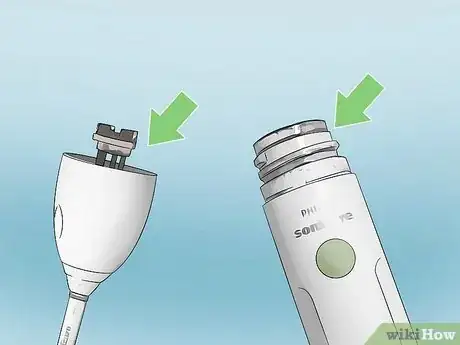
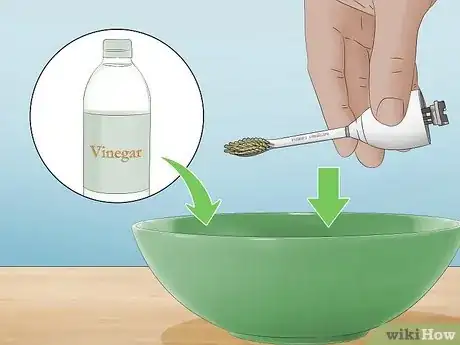

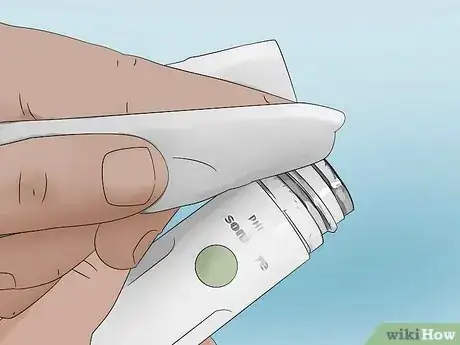

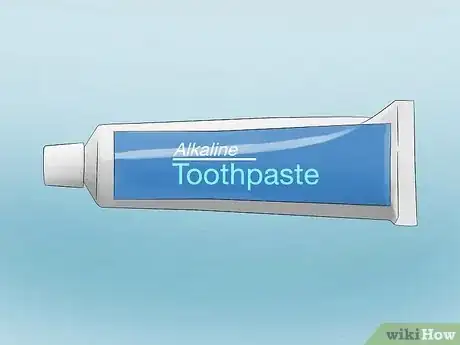
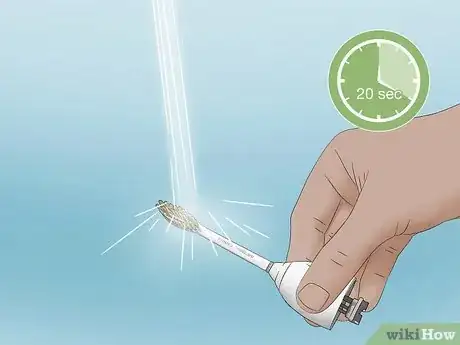

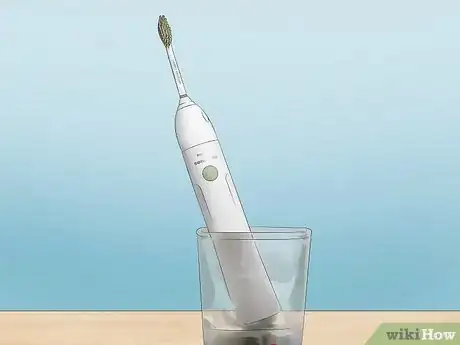
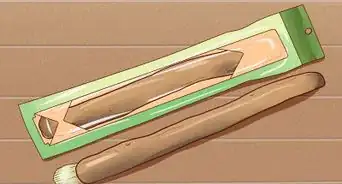

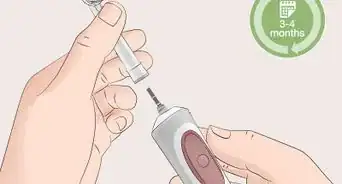





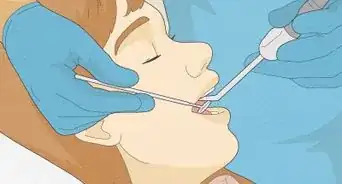
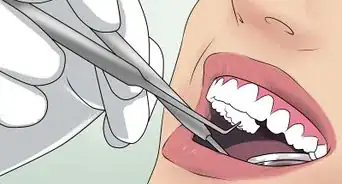
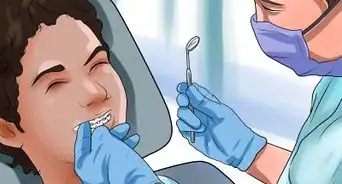













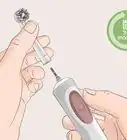



































Medical Disclaimer
The content of this article is not intended to be a substitute for professional medical advice, examination, diagnosis, or treatment. You should always contact your doctor or other qualified healthcare professional before starting, changing, or stopping any kind of health treatment.
Read More...